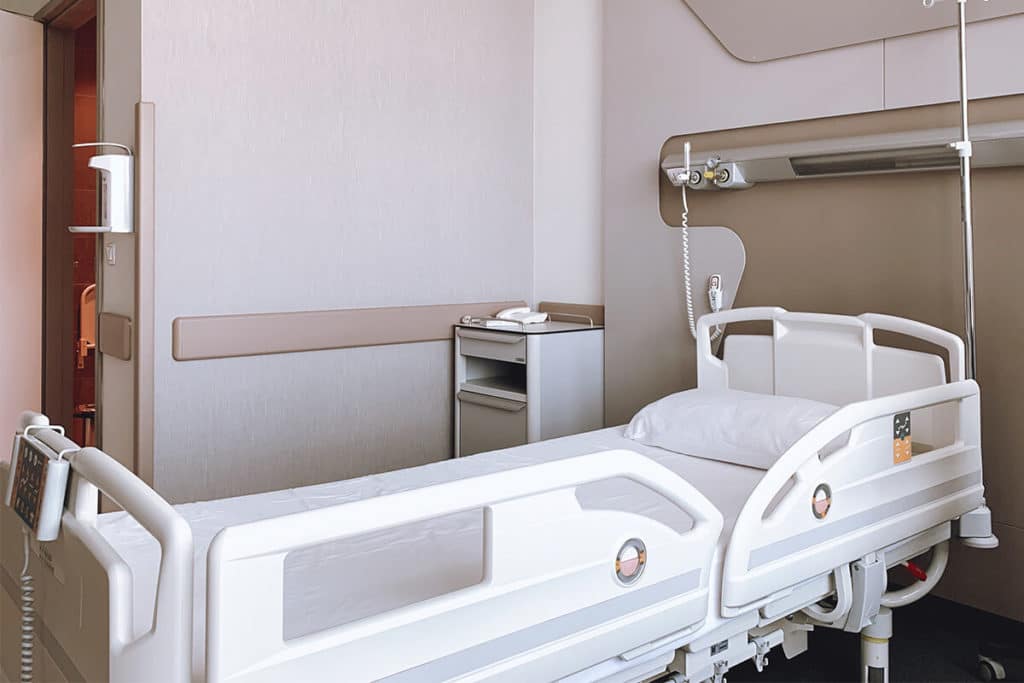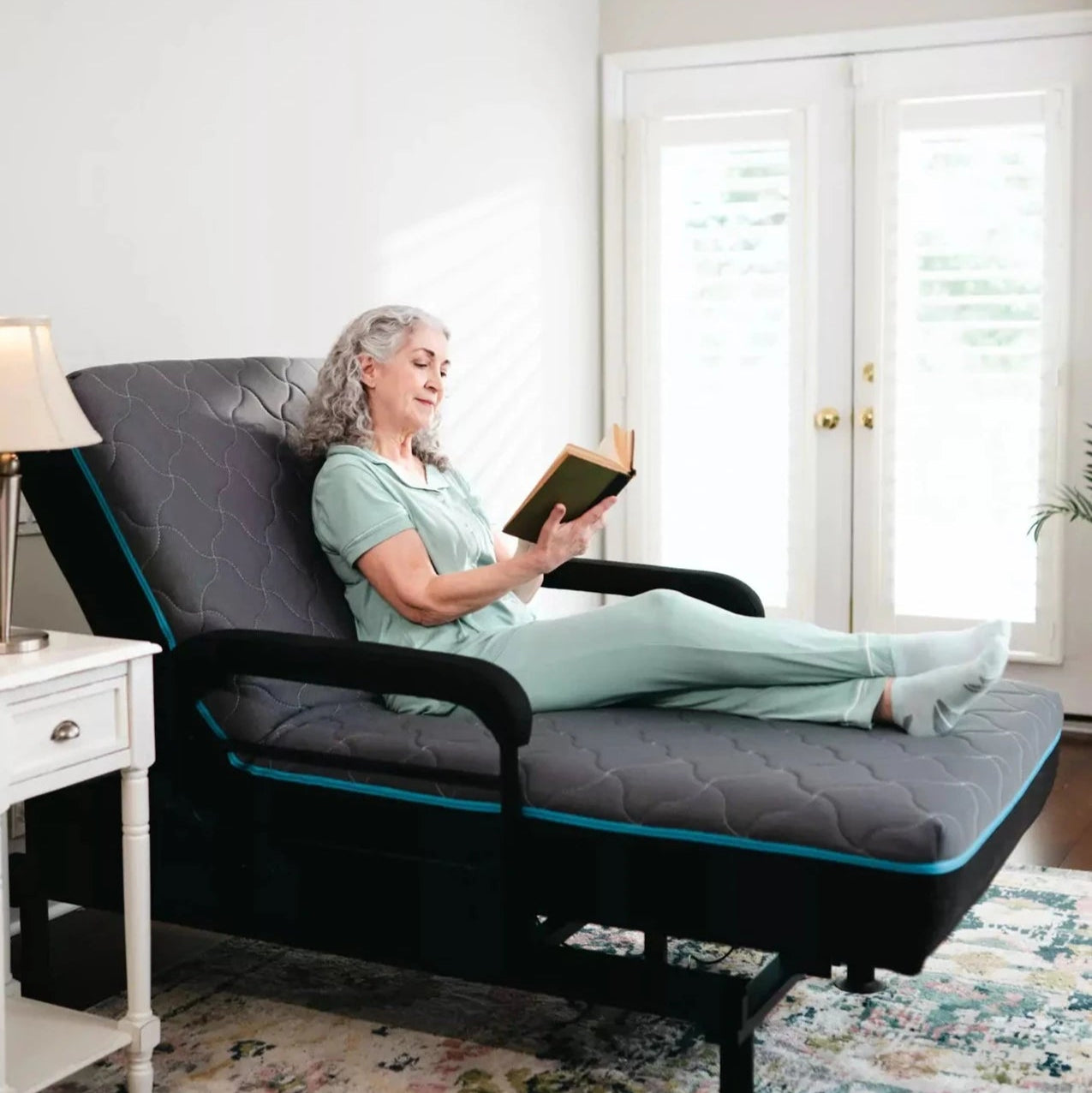The 4-Minute Rule for Hospital Beds For Home Use
The 4-Minute Rule for Hospital Beds For Home Use
Blog Article
Things about Hospital Beds For Home Use
Table of ContentsNot known Factual Statements About Hospital Beds For Home Use Not known Details About Hospital Beds For Home Use See This Report about Hospital Beds For Home UseThe Ultimate Guide To Hospital Beds For Home UseThe smart Trick of Hospital Beds For Home Use That Nobody is Talking AboutThe Only Guide for Hospital Beds For Home UseThe Ultimate Guide To Hospital Beds For Home Use
Next, we will certainly explore the qualities, utilizes, and Pros and Disadvantages of each type of health center bed in deepness. A manual medical facility bed is the most standard type of health center bed, and all change features are attained with a hand-cranked tool.These hand-cranked tools are generally mounted at the foot or side of the bed, and the caregiver or patient can adjust the elevation or tilt angle of the bed by shaking the handle. Because no electrical parts are needed, are generally cheaper than electric healthcare facility beds, suitable for medical institutions or family members with minimal spending plans.
Hospital Beds For Home Use Can Be Fun For Anyone
For patients who require to adjust their pose or height often, hands-on beds might not be hassle-free sufficient because each adjustment requires manual operation. If the bed requires to be adjusted regularly, taking care of staff might require to invest more physical strength to operate the hand-cranked gadget - hospital beds for home use. Manual beds are typically suitable for clients in the recuperation duration or celebrations with low nursing needs
Generally, the modification of the back and legs is controlled by electrical motors, while the general elevation adjustment still needs to be done by hand. The objective of this layout is to minimize costs and energy consumption while preserving high functional ease. Contrasted with hand-operated medical facility beds, semi-electric health center beds are much more convenient in adjusting the back and legs, specifically for patients who need to readjust their pose often.
Because only some features rely upon electrical power, semi-electric hospital beds consume much less power throughout use. Given that the overall elevation still requires to be adjusted manually, it may not be as convenient as totally electric healthcare facility beds for clients that require to change the bed height regularly. Compared with manual hospital beds, semi-electric medical facility beds are somewhat a lot more complex to run, requiring customers to grasp the combination of electrical and hand-operated procedures.
Electric medical facility beds have high adjustment precision and can be precisely readjusted to a details angle and height according to the requirements of clients to provide one of the most comfortable assistance. All-electric health center beds are generally outfitted with a selection of additional features, such as integrated ranges, mattress stress modification, etc, to fulfill the special requirements of various individuals.
Hospital Beds For Home Use Fundamentals Explained
A reduced bed is a particularly made health center bed that can be adapted to a really reduced degree, usually just a couple of inches from the ground. The objective of this design is to minimize the risk of clients dropping from the bed, particularly for patients who are at threat of falling, such as the elderly or clients with restricted mobility.

The Of Hospital Beds For Home Use
give a treatment setting ideal for children's elevation and body shape, increasing the comfort and safety of children. Some pediatric beds are additionally geared up with vibrantly tinted bed rails or animation decors to minimize the anxiety of youngsters in the health center environment. For children who need to stay in bed for a long period of time, pediatric beds are generally furnished with anti-bedsore bed mattress, adjustable bed rails and various other features to provide detailed treatment assistance.
The distribution bed is additionally geared up with postpartum recovery functions, such as mattress modification, bed home heating, and so on, to assist mommies recuperate much faster. The intensive treatment bed (ICU Bed) is created for the critical care unit (ICU) and has thorough monitoring and nursing functions. This kind of bed is typically geared up with user interfaces for a variety of monitoring equipment, which can check the patient's vital indicators in actual time, such as heart rate, high blood pressure, respiration, etc.
The Best Guide To Hospital Beds For Home Use
The intensive care bed has a completely electrical modification function, which can promptly adjust the angle and position of the bed to satisfy the needs of different treatments and directory care. The style of ICU bed thinks about the demand of rescue operation. The bed can be promptly adapted to the most appropriate rescue posture and accept the use of rescue tools.
It can efficiently isolate individuals from the outside world and minimize the threat of infection transmission. Isolation beds are usually geared up with unique bed drapes or securing covers and linked to air purification systems to maintain the air around the bed tidy. Seclusion beds are particularly developed to prevent the spread of virus from transmittable individuals and protect the safety of other people and medical personnel.
Isolation beds are outfitted with air filtration systems that can filter microorganisms and particle issue in the air to maintain the air around the bed clean. Can additionally be readjusted to various positions.
Some Known Details About Hospital Beds For Home Use
Broader and tougher than a common bed. Overweight, excessive weight, client sizeDesigned for individuals at threat of dropping out of bed. Reduced to the ground than a common bed. Patient falls, bed heightDesigned for youngsters. Smaller sized in size than a standard bed. Pediatric medicines, child-sized equipmentUsed during giving birth. Equipped with attributes such as braces and a headrest.

In a healthcare setting, selecting the appropriate bed can not only improve the effectiveness of treatment, yet additionally significantly enhance client convenience and security. By comprehending the types and uses these beds, medical care facilities and household caretakers can better sustain and take care of their clients.
The Buzz on Hospital Beds For Home Use
HomeCare Healthcare Facility Beds, a division of DiaMedical USA, is committed to giving total transparency for its clients. Patients can be overwhelmed by the various alternatives in long-term treatment items, and HomeCare Hospital Beds is dedicated to improving this procedure, while guaranteeing clients get the details and assistance they need.
Medicare Part B (Medical Insurance coverage) covers healthcare facility beds as durable medical equipment (DME) that your physician recommends for usage in your home. After you meet the Part B insurance deductible you pay 20% of the Medicare-approved amount (if your supplier approves job). Medicare pays for various sort of DME in different ways.

Report this page